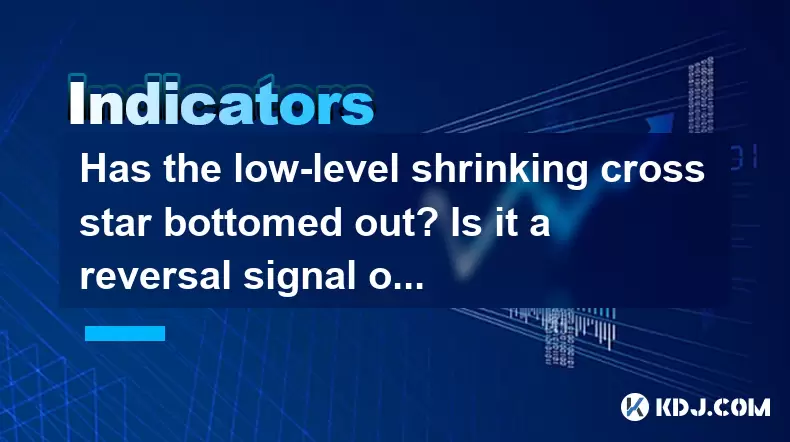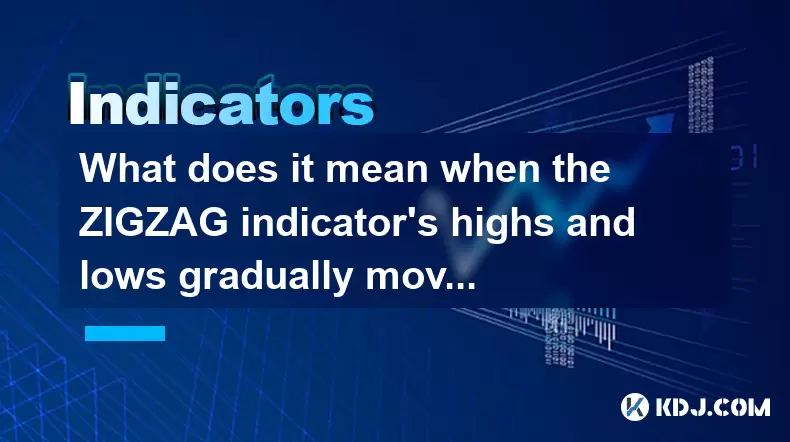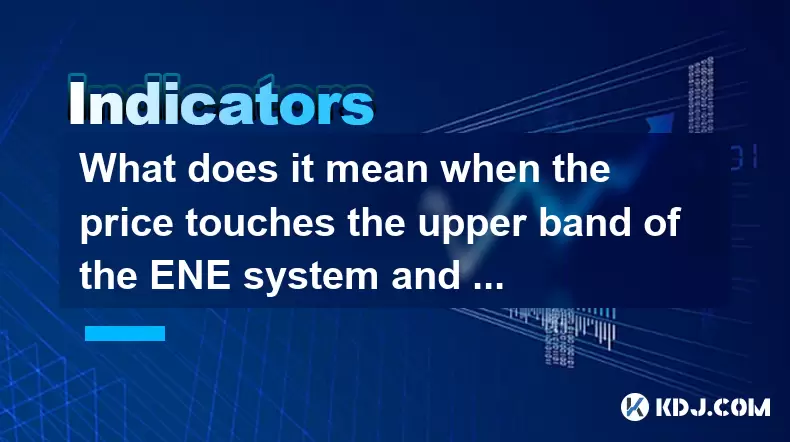-
 Bitcoin
Bitcoin $116600
0.11% -
 Ethereum
Ethereum $4235
4.72% -
 XRP
XRP $3.283
0.22% -
 Tether USDt
Tether USDt $1.000
0.00% -
 BNB
BNB $805.4
1.59% -
 Solana
Solana $181.8
2.27% -
 USDC
USDC $0.9998
-0.01% -
 Dogecoin
Dogecoin $0.2450
7.90% -
 TRON
TRON $0.3363
-0.80% -
 Cardano
Cardano $0.8161
2.85% -
 Hyperliquid
Hyperliquid $43.68
6.68% -
 Chainlink
Chainlink $21.20
8.50% -
 Stellar
Stellar $0.4526
0.64% -
 Sui
Sui $3.949
3.12% -
 Bitcoin Cash
Bitcoin Cash $571.3
-2.83% -
 Hedera
Hedera $0.2656
1.45% -
 Avalanche
Avalanche $24.41
3.14% -
 Ethena USDe
Ethena USDe $1.001
0.03% -
 Litecoin
Litecoin $122.0
-2.03% -
 Toncoin
Toncoin $3.425
1.51% -
 UNUS SED LEO
UNUS SED LEO $9.004
0.19% -
 Shiba Inu
Shiba Inu $0.00001381
4.36% -
 Uniswap
Uniswap $10.93
0.05% -
 Polkadot
Polkadot $4.117
3.93% -
 Dai
Dai $1.000
0.02% -
 Pepe
Pepe $0.00001235
3.53% -
 Bitget Token
Bitget Token $4.507
0.36% -
 Cronos
Cronos $0.1570
2.05% -
 Monero
Monero $274.9
0.14% -
 Ethena
Ethena $0.7511
15.68%
Has the low-level shrinking cross star bottomed out? Is it a reversal signal or a relay pattern?
The low-level shrinking cross star, often seen at downtrend bottoms, signals potential reversals or continuations, requiring confirmation from subsequent price action and technical indicators.
Jun 03, 2025 at 04:56 am

The low-level shrinking cross star is a specific candlestick pattern that traders and analysts within the cryptocurrency market often scrutinize to determine potential market movements. This pattern, characterized by a small body with long upper and lower shadows, can signal either a reversal or a continuation of the current trend, depending on the context in which it appears. In this article, we will delve into the specifics of the low-level shrinking cross star, examining whether it has bottomed out, and whether it serves as a reversal signal or a relay pattern.
Understanding the Low-Level Shrinking Cross Star
The low-level shrinking cross star is a candlestick pattern that typically appears at the bottom of a downtrend. It is identified by a small body that is situated near the middle of the trading range, with long upper and lower shadows. This pattern suggests that there was significant volatility during the trading period, with the price moving both up and down substantially but closing near the opening price.
The appearance of this pattern at a low level implies that the market might be reaching a point of exhaustion in the downtrend. Traders look for this pattern as it can signal a potential shift in market sentiment, but it is crucial to consider the broader market context and other technical indicators to confirm any potential signals.
Has the Low-Level Shrinking Cross Star Bottomed Out?
Determining whether the low-level shrinking cross star has bottomed out involves analyzing the price action that follows the pattern. If the price begins to rise after the appearance of this pattern, it could indicate that the market has indeed bottomed out and is starting to reverse. However, if the price continues to decline, it suggests that the downtrend is still in play and the pattern might be a false signal.
To assess whether the market has bottomed out, traders should look for subsequent bullish candlesticks or other bullish patterns such as the bullish engulfing pattern or a hammer. Additionally, technical indicators like the Relative Strength Index (RSI) and the Moving Average Convergence Divergence (MACD) can provide further confirmation. If these indicators show oversold conditions and begin to turn upwards, it strengthens the case that the low-level shrinking cross star has marked the bottom.
Is It a Reversal Signal or a Relay Pattern?
The low-level shrinking cross star can act as either a reversal signal or a relay pattern, and the distinction depends on the subsequent price action. A reversal signal indicates that the current downtrend is ending and a new uptrend is beginning. Conversely, a relay pattern suggests that the downtrend is merely pausing before continuing.
To determine which scenario is more likely, traders should observe the price movement in the candles following the low-level shrinking cross star. If the price breaks above the high of the cross star and continues to rise, it is a strong indication of a reversal. On the other hand, if the price fails to break above the high and instead resumes its downward trajectory, the pattern is likely a relay.
Technical Indicators and Volume Analysis
In addition to price action, technical indicators and volume analysis are crucial in interpreting the low-level shrinking cross star. The RSI, for example, can help identify whether the market is oversold, which would support the notion of a potential reversal. If the RSI is below 30 and starts to rise, it adds credibility to the reversal signal.
Volume analysis is equally important. An increase in volume accompanying the low-level shrinking cross star can indicate strong buying interest, supporting the case for a reversal. Conversely, if the volume is low, it might suggest that the market lacks the conviction to reverse the downtrend, and the pattern might be a relay.
Confirmation and Risk Management
Confirmation of the low-level shrinking cross star as a reversal signal requires additional evidence from other technical tools and patterns. Traders should not rely solely on this single pattern but should look for corroborating signals from indicators like the MACD, which can show a bullish crossover, or from chart patterns such as a double bottom.
Risk management is essential when trading based on the low-level shrinking cross star. Traders should set stop-loss orders below the low of the cross star to limit potential losses if the pattern turns out to be a false signal. Additionally, traders can use position sizing to manage their exposure to the market, ensuring that they do not risk more than they can afford to lose.
Practical Application in Trading
To apply the low-level shrinking cross star in trading, follow these steps:
- Identify the Pattern: Look for a candlestick with a small body and long upper and lower shadows at the bottom of a downtrend.
- Check the Context: Ensure that the pattern appears after a significant downtrend, as this increases the likelihood of it being a meaningful signal.
- Analyze Subsequent Candles: Monitor the price action in the candles that follow the low-level shrinking cross star. Look for a bullish candle that breaks above the high of the cross star.
- Use Technical Indicators: Confirm the signal with technical indicators such as the RSI and MACD. An RSI reading below 30 that starts to rise, and a bullish MACD crossover, can support the case for a reversal.
- Check Volume: Look for an increase in volume accompanying the pattern, which can indicate strong buying interest.
- Set Stop-Loss Orders: Place a stop-loss order below the low of the low-level shrinking cross star to manage risk.
- Enter the Trade: If all conditions are met, consider entering a long position, expecting the price to rise.
Frequently Asked Questions
Q1: Can the low-level shrinking cross star appear in an uptrend?
Yes, the low-level shrinking cross star can appear in an uptrend, but it is less common and typically less significant as a reversal signal. In an uptrend, it might indicate a temporary pause or consolidation before the uptrend continues.
Q2: How reliable is the low-level shrinking cross star as a trading signal?
The reliability of the low-level shrinking cross star as a trading signal depends on the broader market context and confirmation from other technical indicators. While it can be a powerful signal, it should not be used in isolation but rather as part of a comprehensive trading strategy.
Q3: What other candlestick patterns should I look for to confirm a reversal after a low-level shrinking cross star?
Other candlestick patterns that can confirm a reversal after a low-level shrinking cross star include the bullish engulfing pattern, the hammer, and the morning star. These patterns, when appearing after the low-level shrinking cross star, can provide additional evidence of a potential trend reversal.
Q4: How can I differentiate between a low-level shrinking cross star and a doji?
A low-level shrinking cross star and a doji both have small bodies, but the key difference lies in the length of the shadows. A low-level shrinking cross star has long upper and lower shadows, indicating significant volatility, while a doji typically has shorter shadows and represents indecision in the market.
Disclaimer:info@kdj.com
The information provided is not trading advice. kdj.com does not assume any responsibility for any investments made based on the information provided in this article. Cryptocurrencies are highly volatile and it is highly recommended that you invest with caution after thorough research!
If you believe that the content used on this website infringes your copyright, please contact us immediately (info@kdj.com) and we will delete it promptly.
- Solana Meme Coin Presales: Hype or the Next Big Thing?
- 2025-08-10 02:50:12
- Pi Network, Altcoin Season, and Breakout Tokens: What's Hot in 2025?
- 2025-08-10 02:50:12
- Decoding Crypto Presales: Is Cold Wallet the New Neo Pepe?
- 2025-08-10 02:30:12
- Cryptos, 2025, Market Caps: Riding the Next Wave
- 2025-08-10 02:30:12
- Trump, Crypto Vehicle, and WLFI Tokens: A New York Minute on the Latest Buzz
- 2025-08-10 00:30:12
- Wheat Penny Fortune: Unearthing Valuable Coins in Your Pocket Change
- 2025-08-10 00:35:19
Related knowledge

What does it mean when the price is trading above the SAR indicator but the red dots are densely packed?
Aug 09,2025 at 11:49pm
Understanding the SAR Indicator and Its Visual SignalsThe SAR (Parabolic Stop and Reverse) indicator is a technical analysis tool used primarily to de...

What does it mean when the MACD histogram continues to shorten but the price reaches a new high?
Aug 09,2025 at 09:29pm
Understanding the MACD Histogram and Its ComponentsThe MACD (Moving Average Convergence Divergence) indicator is a widely used technical analysis tool...

What does it mean when the Triple Moving Average (TRIX) turns downward but the price doesn't fall?
Aug 09,2025 at 12:42pm
Understanding the Triple Moving Average (TRIX) IndicatorThe Triple Moving Average, commonly known as TRIX, is a momentum oscillator designed to filter...

What does it mean when the 10-day and 30-day moving averages repeatedly intertwine?
Aug 10,2025 at 02:42am
Understanding Moving Averages in Cryptocurrency TradingMoving averages are among the most widely used technical indicators in the cryptocurrency tradi...

What does it mean when the ZIGZAG indicator's highs and lows gradually move downwards?
Aug 10,2025 at 02:14am
Understanding the ZIGZAG Indicator in Cryptocurrency TradingThe ZIGZAG indicator is a popular technical analysis tool used by cryptocurrency traders t...

What does it mean when the price touches the upper band of the ENE system and then falls back?
Aug 10,2025 at 12:42am
Understanding the ENE Indicator StructureThe ENE (Envelope) indicator is a technical analysis tool used in cryptocurrency trading to identify potentia...

What does it mean when the price is trading above the SAR indicator but the red dots are densely packed?
Aug 09,2025 at 11:49pm
Understanding the SAR Indicator and Its Visual SignalsThe SAR (Parabolic Stop and Reverse) indicator is a technical analysis tool used primarily to de...

What does it mean when the MACD histogram continues to shorten but the price reaches a new high?
Aug 09,2025 at 09:29pm
Understanding the MACD Histogram and Its ComponentsThe MACD (Moving Average Convergence Divergence) indicator is a widely used technical analysis tool...

What does it mean when the Triple Moving Average (TRIX) turns downward but the price doesn't fall?
Aug 09,2025 at 12:42pm
Understanding the Triple Moving Average (TRIX) IndicatorThe Triple Moving Average, commonly known as TRIX, is a momentum oscillator designed to filter...

What does it mean when the 10-day and 30-day moving averages repeatedly intertwine?
Aug 10,2025 at 02:42am
Understanding Moving Averages in Cryptocurrency TradingMoving averages are among the most widely used technical indicators in the cryptocurrency tradi...

What does it mean when the ZIGZAG indicator's highs and lows gradually move downwards?
Aug 10,2025 at 02:14am
Understanding the ZIGZAG Indicator in Cryptocurrency TradingThe ZIGZAG indicator is a popular technical analysis tool used by cryptocurrency traders t...

What does it mean when the price touches the upper band of the ENE system and then falls back?
Aug 10,2025 at 12:42am
Understanding the ENE Indicator StructureThe ENE (Envelope) indicator is a technical analysis tool used in cryptocurrency trading to identify potentia...
See all articles

























































































